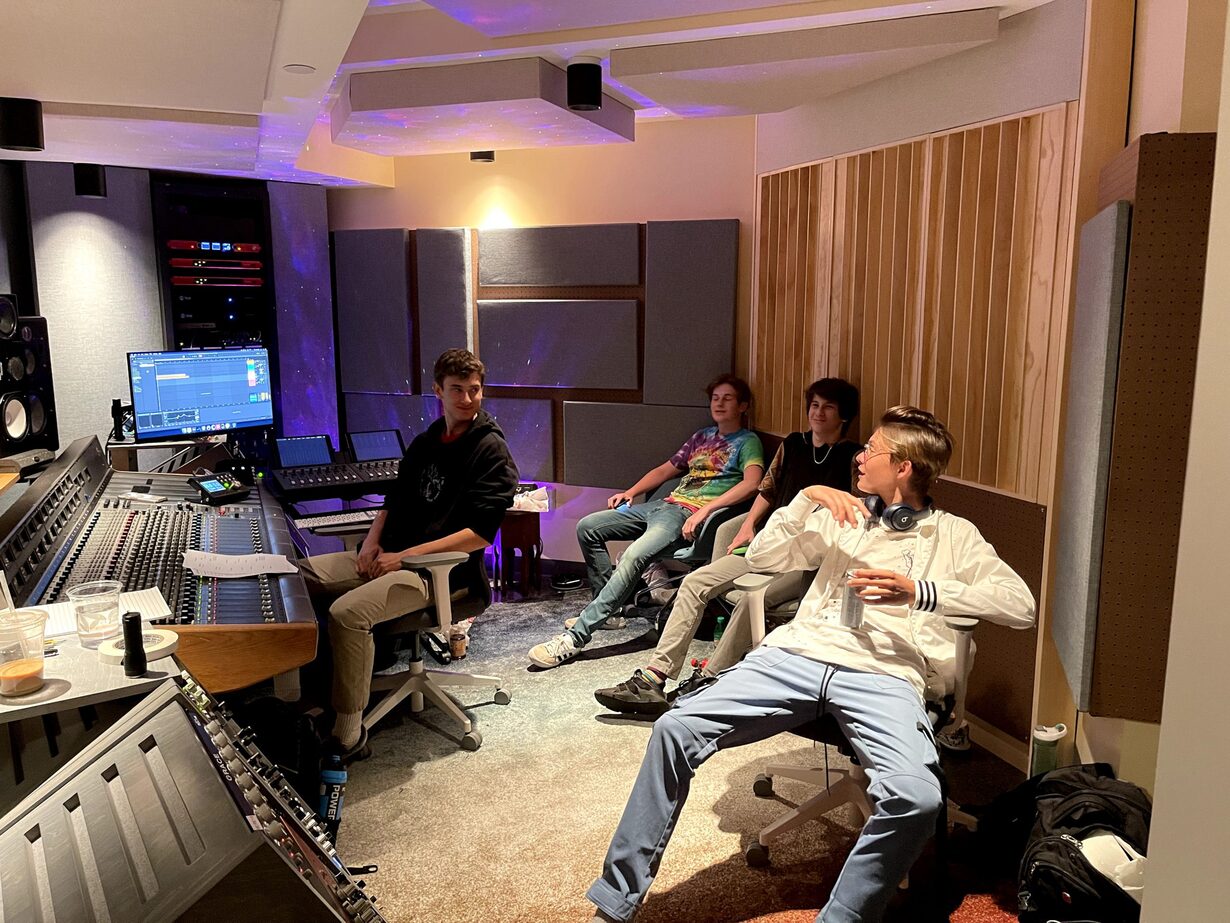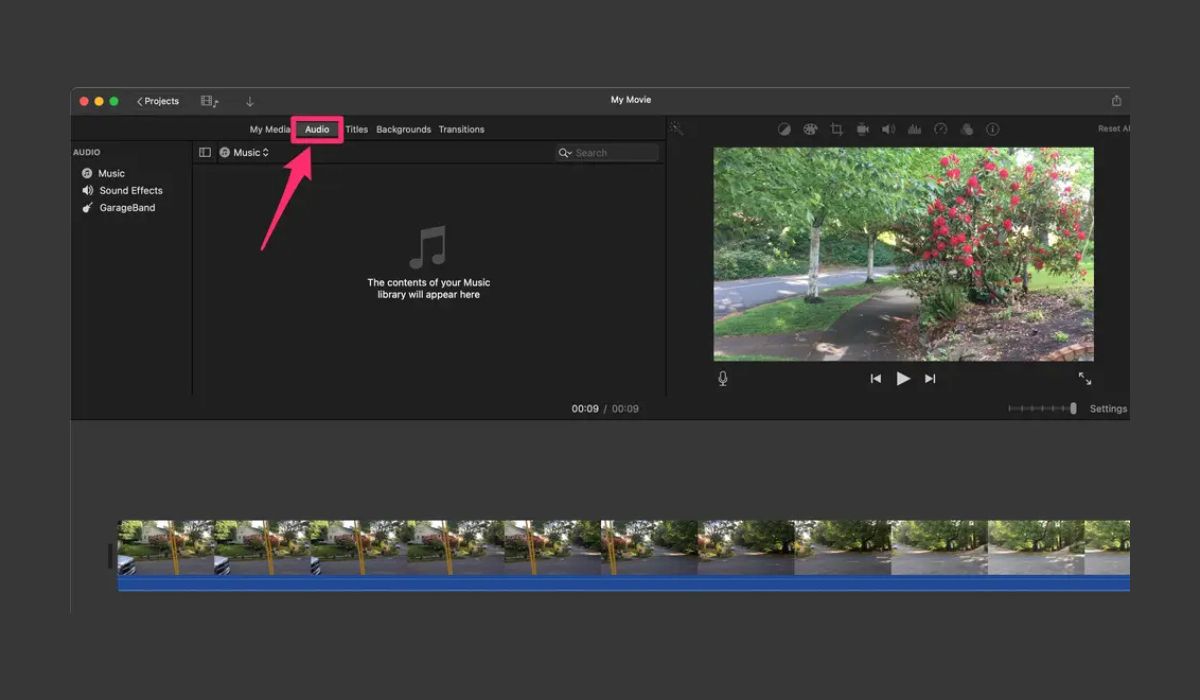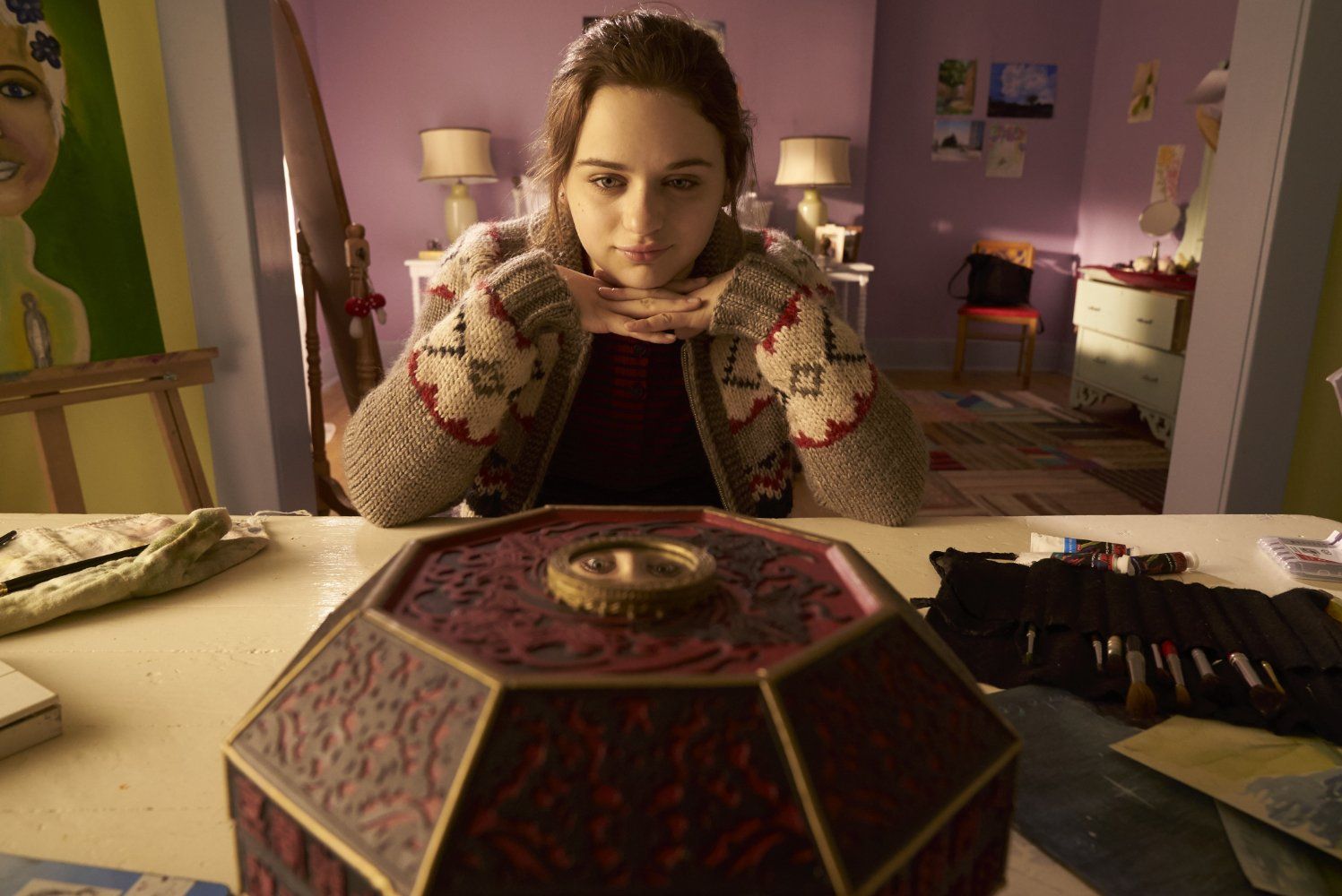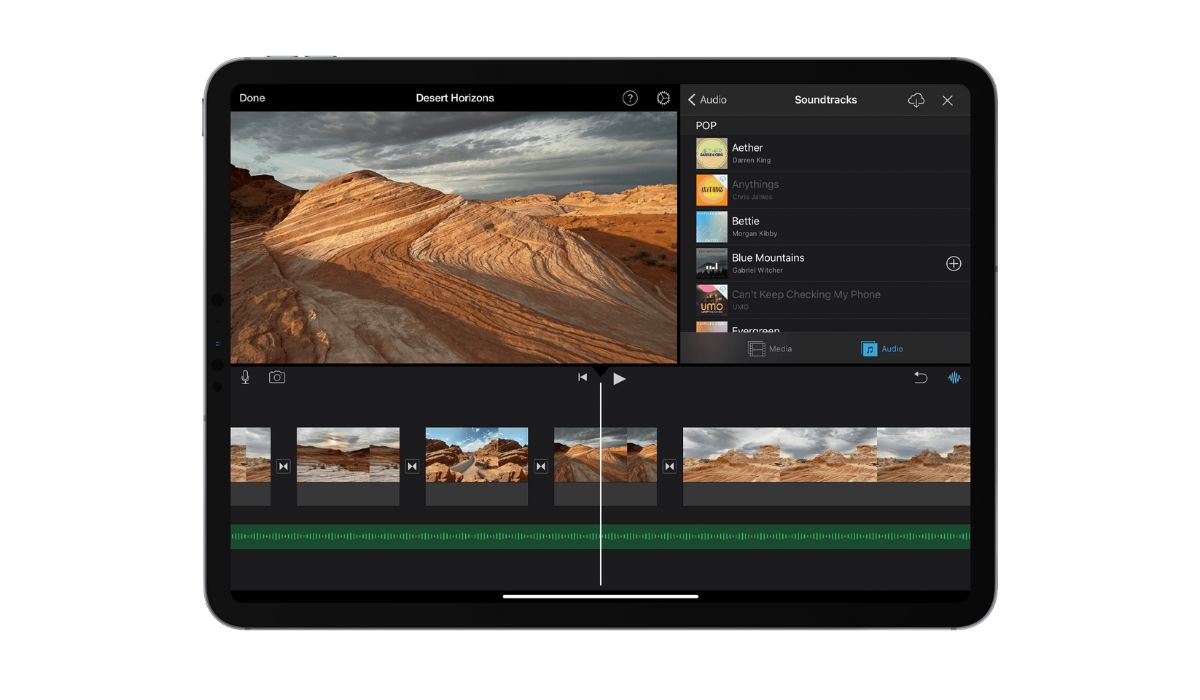Home>Production & Technology>Soundtrack>What Is A Movie Soundtrack


Soundtrack
What Is A Movie Soundtrack
Published: February 18, 2024
Discover the importance of a movie soundtrack and how it enhances the overall cinematic experience. Learn about the role of soundtracks in conveying emotions and setting the tone for films. Explore the creative process behind crafting memorable and impactful soundtracks.
(Many of the links in this article redirect to a specific reviewed product. Your purchase of these products through affiliate links helps to generate commission for AudioLover.com, at no extra cost. Learn more)
Table of Contents
Introduction
Lights dim, the audience hushes, and the screen comes to life. The magic of cinema is not solely reliant on the visual spectacle but also on the auditory experience. A movie soundtrack serves as the invisible hand guiding our emotions, enhancing the narrative, and etching scenes into our memories. It's the heartbeat of a film, pulsating with every moment, evoking joy, sorrow, fear, and triumph. In this article, we'll delve into the captivating world of movie soundtracks, exploring their definition, role, components, and evolution.
The term "movie soundtrack" often conjures images of iconic melodies and heart-pounding scores that have become synonymous with beloved films. However, the essence of a movie soundtrack extends beyond mere background music. It encompasses a symphony of sounds meticulously crafted to harmonize with the visual elements, creating an immersive and unforgettable cinematic experience.
Whether it's the spine-tingling theme of a villain, the tender melody underscoring a poignant moment, or the pulsating rhythm driving an action sequence, the movie soundtrack is an indispensable aspect of storytelling. It has the power to transport us to distant worlds, evoke nostalgia, and stir our deepest emotions.
As we embark on this exploration, we'll uncover the intricacies of movie soundtracks, from their inception to the present day. We'll unravel the artistry and innovation that shape these musical tapestries, as well as the profound impact they have on the film industry and audiences worldwide. Join us on this melodic odyssey through the realms of cinema, where every note is a brushstroke painting the canvas of storytelling.
Definition of a Movie Soundtrack
A movie soundtrack encompasses the musical composition and audio elements that accompany and enhance the visual aspects of a film. It is a meticulously curated collection of music, sound effects, and dialogue excerpts that synchronize with the on-screen action, dialogue, and emotions. The soundtrack is meticulously crafted to evoke specific moods, intensify dramatic moments, and immerse the audience in the cinematic journey.
Contrary to popular belief, a movie soundtrack is not limited to the commercially released album featuring songs from or inspired by a film. While these soundtrack albums are indeed a prominent aspect, the term encompasses the entire sonic landscape of a movie, including the original score composed specifically for the film, as well as pre-existing songs strategically integrated into key scenes.
At its core, a movie soundtrack serves as a narrative tool, enriching the storytelling process by eliciting emotional responses and deepening the audience’s connection to the characters and plot. Whether it’s the haunting refrain of a leitmotif symbolizing a character, the rousing orchestral swell during a climactic battle, or the diegetic sounds of a bustling city, each element contributes to the immersive tapestry of the cinematic experience.
Moreover, the soundtrack plays a pivotal role in establishing the time period, cultural milieu, and thematic resonance of a film. It can transport viewers to specific eras, evoke nostalgia, or infuse a contemporary flair, thereby enriching the overall atmosphere and authenticity of the storytelling.
Ultimately, a movie soundtrack is a multifaceted entity that transcends the realm of music, intertwining with the visual narrative to create a cohesive and resonant cinematic journey. Its significance lies in its ability to transcend language barriers, evoke universal emotions, and etch indelible memories in the hearts and minds of audiences worldwide.
The Role of a Movie Soundtrack
The movie soundtrack plays a multifaceted and indispensable role in shaping the cinematic experience, elevating storytelling, and resonating with audiences on a profound emotional level. Its influence extends far beyond mere background accompaniment, permeating every frame and resonating in the hearts of viewers long after the credits roll.
First and foremost, the soundtrack serves as a conduit for emotional expression, infusing scenes with depth, nuance, and resonance. It has the power to amplify the impact of pivotal moments, elicit empathy for characters, and intensify the audience’s emotional investment in the narrative. Whether it’s the tender strains of a love theme, the ominous crescendo heralding the arrival of a villain, or the triumphant swell accompanying a hero’s triumph, the soundtrack is instrumental in eliciting and magnifying the audience’s emotional responses.
Beyond its emotional resonance, the soundtrack also functions as a narrative guide, guiding the audience through the ebb and flow of the story. It underscores character development, foreshadows plot twists, and punctuates pivotal moments, effectively serving as a silent yet eloquent storyteller. Through the strategic use of leitmotifs, recurring themes, and musical motifs, the soundtrack weaves a sonic tapestry that enriches the narrative and deepens the audience’s engagement.
Furthermore, the soundtrack contributes significantly to the establishment of atmosphere and setting within a film. Whether it’s evoking the bustling energy of a metropolitan city, the eerie ambiance of a haunted mansion, or the ethereal tranquility of a scenic landscape, the soundtrack is instrumental in transporting viewers to diverse and evocative environments. It molds the sensory landscape of the film, imbuing each setting with a distinct auditory identity that complements the visual imagery.
Moreover, the soundtrack serves as a mnemonic device, etching indelible memories in the minds of audiences. Iconic themes and musical motifs become synonymous with beloved characters, franchises, and cinematic moments, transcending the confines of the screen to permeate popular culture and collective memory.
Ultimately, the movie soundtrack is a silent yet omnipresent force that harmonizes with the visual narrative, amplifying its emotional impact, guiding the audience through the story, and leaving an enduring imprint on the cinematic landscape.
Components of a Movie Soundtrack
A movie soundtrack is a rich tapestry woven from diverse sonic elements, each contributing to the immersive and evocative auditory landscape of a film. These components harmonize to create a seamless fusion of music, sound effects, and dialogue, enriching the storytelling and resonating with audiences on a profound emotional level.
Original Score: At the heart of every movie soundtrack lies the original score, a bespoke musical composition crafted specifically for the film. Composed by talented maestros, the original score serves as the thematic backbone of the soundtrack, underscoring pivotal moments, character arcs, and emotional beats. It is meticulously tailored to synchronize with the visual narrative, evoking a myriad of emotions and enhancing the storytelling experience.
Sound Effects: In addition to music, sound effects play a pivotal role in shaping the sonic landscape of a film. From the subtle rustling of leaves to the thunderous roar of explosions, sound effects imbue scenes with realism, dynamism, and sensory immersion. They contribute to the overall ambiance, heighten dramatic tension, and bring the visual elements to life with vivid auditory detail.
Dialogue Excerpts: Integral to the soundtrack are dialogue excerpts that punctuate the musical compositions and soundscapes. Whether conveying poignant conversations, impassioned monologues, or memorable one-liners, these snippets of dialogue add a layer of intimacy and authenticity to the auditory experience, reinforcing the emotional and narrative impact of the film.
Pre-Existing Songs: Many movie soundtracks incorporate pre-existing songs strategically curated to complement key scenes and evoke specific emotions. These songs may range from iconic classics to contemporary hits, each chosen for its thematic resonance and ability to enhance the storytelling. When seamlessly integrated, these songs become synonymous with the film, leaving an indelible imprint on the audience’s memory.
Leitmotifs and Musical Themes: Leitmotifs, recurring musical themes associated with specific characters, emotions, or story elements, are instrumental in establishing continuity and emotional resonance within a film. These motifs serve as sonic signatures, weaving a web of thematic connectivity and enriching the audience’s understanding of the narrative through musical symbolism.
Collectively, these components form the intricate tapestry of a movie soundtrack, each contributing its unique sonic hue to the cinematic canvas. Through their harmonious interplay, they elevate the storytelling, evoke profound emotions, and immerse audiences in a symphony of auditory splendor.
The Evolution of Movie Soundtracks
The history of movie soundtracks is a captivating chronicle of innovation, creativity, and cultural evolution, mirroring the dynamic shifts in cinematic storytelling and musical expression. From the early days of silent films to the contemporary era of blockbuster epics, the evolution of movie soundtracks has been a testament to the transformative power of music in film.
Early Soundtracks and Silent Films: In the nascent era of cinema, silent films relied on live musical accompaniment, often performed by pianists, organists, or small orchestras. These musical accompaniments, known as photoplay music, were essential in setting the mood, heightening drama, and engaging audiences in the absence of synchronized sound. They underscored the emotional beats of the narrative, ranging from tender melodies to rousing crescendos, effectively serving as the precursors to the modern movie soundtrack.
The Golden Age of Hollywood: The advent of synchronized sound in the late 1920s revolutionized the cinematic landscape, ushering in the golden age of Hollywood and transforming the role of music in film. Legendary composers such as Max Steiner, Erich Wolfgang Korngold, and Bernard Herrmann pioneered the art of composing original scores, infusing films with sweeping orchestral arrangements and memorable motifs. Their contributions laid the foundation for the integral role of music in storytelling, shaping the sonic identity of classic films and establishing enduring musical legacies.
Genre Experimentation and Innovation: As cinema diversified in genres and storytelling techniques, so did the evolution of movie soundtracks. The 1960s and 1970s witnessed a wave of experimentation, with filmmakers and composers pushing artistic boundaries and embracing eclectic musical styles. From the psychedelic rock of “Easy Rider” to the iconic themes of “Star Wars,” the era saw a fusion of diverse musical genres, expanding the sonic palette of movie soundtracks and redefining audience expectations.
Contemporary Trends and Technological Advancements: In the digital age, movie soundtracks have evolved alongside technological advancements and cultural shifts. The integration of electronic music, synthesizers, and digital orchestration has broadened the sonic possibilities, enabling composers to sculpt innovative and immersive musical landscapes. Moreover, the collaboration between filmmakers and popular musicians has led to the incorporation of chart-topping hits and genre-defying compositions, further diversifying the sonic tapestry of contemporary movie soundtracks.
Today, movie soundtracks continue to evolve, embracing new sonic frontiers, cultural influences, and narrative experimentation. They remain a testament to the enduring symbiosis between music and cinema, enriching the storytelling experience and resonating with audiences across generations.
Conclusion
The realm of movie soundtracks is a captivating symphony of artistry, innovation, and emotional resonance, woven into the fabric of cinematic storytelling. From the early days of silent films to the contemporary era of blockbuster epics, the evolution of movie soundtracks has mirrored the transformative power of music in film, shaping the auditory landscapes of diverse narratives and leaving an indelible imprint on popular culture.
At its essence, a movie soundtrack transcends the role of mere background accompaniment, emerging as a silent yet omnipresent force that harmonizes with the visual narrative, amplifying its emotional impact, guiding the audience through the story, and leaving an enduring imprint on the cinematic landscape. It serves as a conduit for emotional expression, a narrative guide, an atmospheric enhancer, and a mnemonic device, etching indelible memories in the hearts and minds of audiences worldwide.
As we reflect on the components, evolution, and profound role of movie soundtracks, we gain a deeper appreciation for the intricate artistry that underpins these musical tapestries. The original scores, sound effects, dialogue excerpts, pre-existing songs, and leitmotifs collectively form a rich auditory mosaic, enriching cinematic narratives and resonating with audiences on a profound emotional level.
Moreover, the evolution of movie soundtracks mirrors the dynamic shifts in cinematic storytelling and musical expression, from the golden age of Hollywood to contemporary trends and technological advancements. It stands as a testament to the enduring symbiosis between music and cinema, showcasing the boundless creativity, cultural influence, and emotional resonance that define the art of movie soundtracks.
Ultimately, the movie soundtrack remains an indispensable and enduring facet of cinematic artistry, enriching the storytelling experience, evoking universal emotions, and leaving an indelible mark on the hearts and minds of audiences. It is a melodic odyssey through the realms of cinema, where every note is a brushstroke painting the canvas of storytelling, resonating in the collective memory of generations to come.











